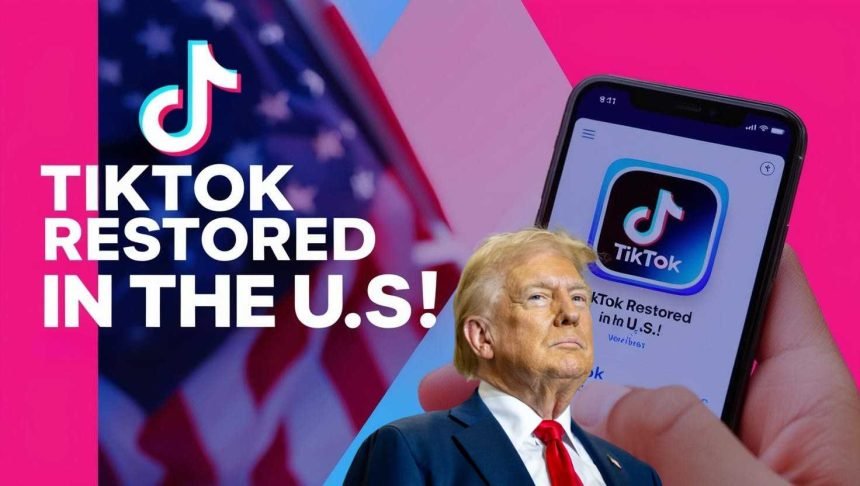In a dramatic turn of events, TikTok has resumed operations in the United States following President-elect Donald Trump’s intervention to pause a federal ban.
This decision, announced via Trump’s Truth Social platform on Sunday morning, comes just hours after the app was removed from major app stores and web-hosting services in compliance with a 2024 law.
The law, aimed at addressing national security concerns, requires TikTok to sever ties with its Chinese parent company, ByteDance, or cease operations in the U.S.
Trump’s Executive Action to Stall Ban
Trump’s announcement included plans to issue an executive order on Monday to delay enforcement of the ban.
His statement provided assurances to app stores, web-hosting services, and other technology companies that they would not face penalties for temporarily supporting TikTok while discussions about the app’s future continue.
“I’m asking companies not to let TikTok stay dark,” Trump said in his post. “I will issue an executive order to extend the period of time before the law’s prohibitions take effect so that we can make a deal to protect our national security.”
The 2024 law, which passed with bipartisan support and was recently upheld by the Supreme Court, mandates that app stores and cloud services cease supporting TikTok unless it is sold to a non-Chinese entity.
Failure to comply could result in significant financial penalties for these companies. Despite this, Trump’s assurances led web-hosting firms like Oracle and Akamai to restore TikTok’s website and app for millions of U.S. users on Sunday.
Mixed Responses from Tech Companies
While web-hosting services have reinstated TikTok, major app store operators Apple and Google remain hesitant to allow the app back on their platforms.
Their compliance with the law means that TikTok is still unavailable for new downloads, cannot receive critical software updates, and is unable to facilitate in-app purchases.
This has left the platform’s functionality partially compromised, as features like live-stream purchases and subscriptions remain offline.
Legal experts have noted a divergence in responses among TikTok’s business partners. Alan Rozenshtein, a professor at the University of Minnesota Law School, highlighted this split, pointing out that Apple and Google are prioritizing legal compliance, whereas Oracle and Akamai appear to be acting on Trump’s promises of liability protection.
Challenges Ahead for TikTok
Despite the app’s temporary return, TikTok’s future in the U.S. remains uncertain. The law allows a 90-day extension for compliance if significant progress is made toward a sale to a non-Chinese entity.
However, the specifics of Trump’s proposed executive order, including its ability to legally override the law, are unclear and could face legal challenges. Critics argue that such an order may not provide sufficient assurances to companies wary of violating federal mandates.
TikTok has repeatedly stated that a sale is unlikely due to the complex nature of its global operations. Adding to the uncertainty, China has signaled its intent to block any transfer of TikTok’s video-recommendation technology, which is critical to the app’s success.
Meanwhile, Trump has floated the idea of the U.S. government taking a 50% ownership stake in a potential joint venture, though details remain vague.
Political and Legal Tensions
The political and legal dimensions of the TikTok saga continue to evolve. Trump’s intervention has drawn mixed reactions from lawmakers.
Democratic leaders, including Senator Chuck Schumer, have urged for a resolution to keep TikTok operational, citing potential economic and cultural impacts.
On the other hand, Republican senators like Tom Cotton and Pete Ricketts have emphasized the need to enforce the law as written, warning tech companies of the severe consequences of non-compliance.
The stakes are high for TikTok, which boasts approximately 170 million U.S. users and serves as a critical platform for influencers, small businesses, and content creators.
The app’s temporary blackout disrupted operations for countless users and businesses, highlighting its significant role in the digital economy.





